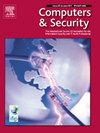A classifications framework for continuous biometric authentication (2018–2024)
IF 4.8
2区 计算机科学
Q1 COMPUTER SCIENCE, INFORMATION SYSTEMS
引用次数: 0
Abstract
The increase in personal devices, the amount of private and sensitive information these devices store/process, and the importance of this information have introduced vital security requirements for user authentication to facilitate data access and collection. Continuous Biometric Authentication is a set of techniques developed to monitor a person's biometrics continuously and ensures transparent/implicit authentication. These protocols could mitigate the security and usability limitations of one-time authentication mechanisms in personal computers and mobile devices. As a result, the popularity of continuous authentication technologies in research has drastically increased, leading to a multitude of different biometric data sampling techniques. These techniques include physiological versus behavioural systems or unimodal versus multimodal authenticators. This paper compares the various data sampling approaches by examining 80 recent state-of-the-art papers and outlining their respective advantages and disadvantages. Firstly, the paper introduces the proposed Continuous Biometric framework, including a diagram detailing its specifics and the rationale for focusing on biometric data sampling. It then explains the system architecture and how our framework integrates with it. Following which, the framework compares the surveyed papers across several popular authentication metrics. Lastly, the paper discusses the challenges that need to be addressed for the widespread adoption of this technology in everyday commercial use.
求助全文
约1分钟内获得全文
求助全文
来源期刊

Computers & Security
工程技术-计算机:信息系统
CiteScore
12.40
自引率
7.10%
发文量
365
审稿时长
10.7 months
期刊介绍:
Computers & Security is the most respected technical journal in the IT security field. With its high-profile editorial board and informative regular features and columns, the journal is essential reading for IT security professionals around the world.
Computers & Security provides you with a unique blend of leading edge research and sound practical management advice. It is aimed at the professional involved with computer security, audit, control and data integrity in all sectors - industry, commerce and academia. Recognized worldwide as THE primary source of reference for applied research and technical expertise it is your first step to fully secure systems.
 求助内容:
求助内容: 应助结果提醒方式:
应助结果提醒方式:


